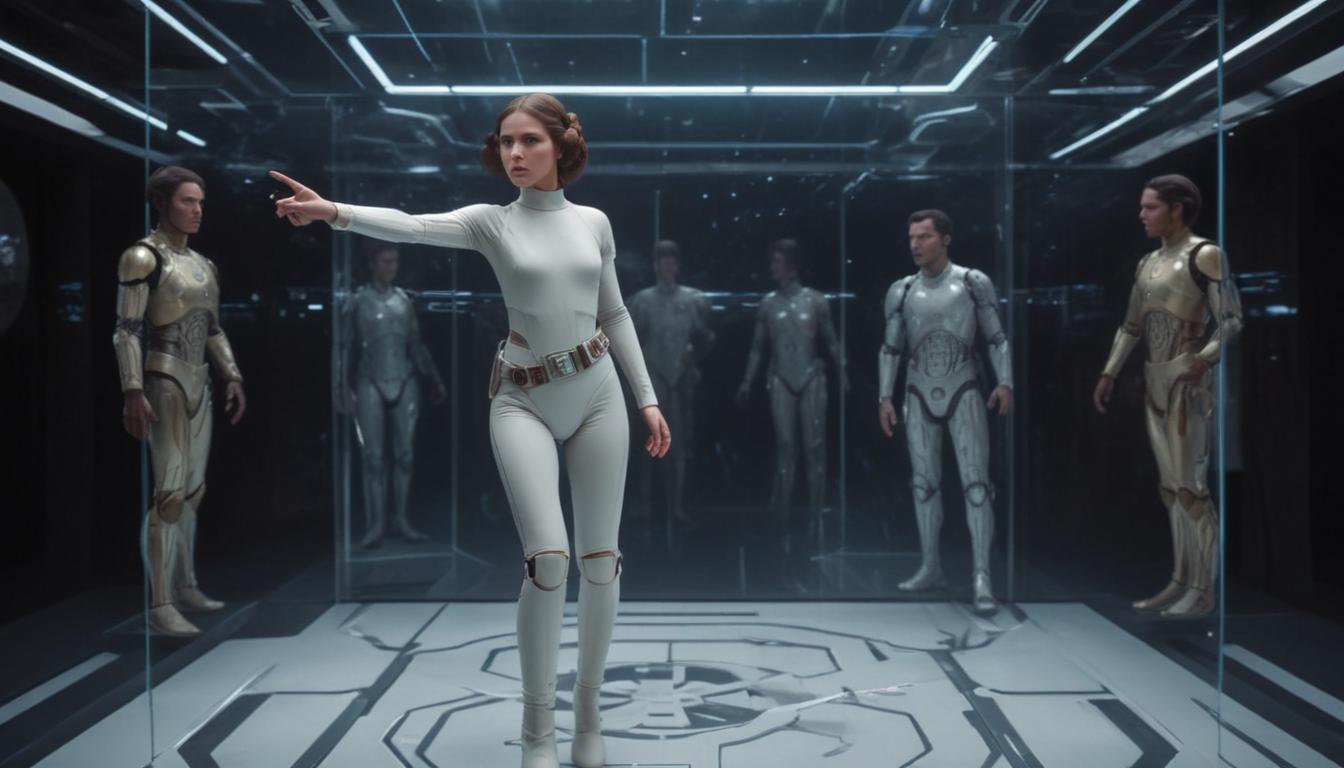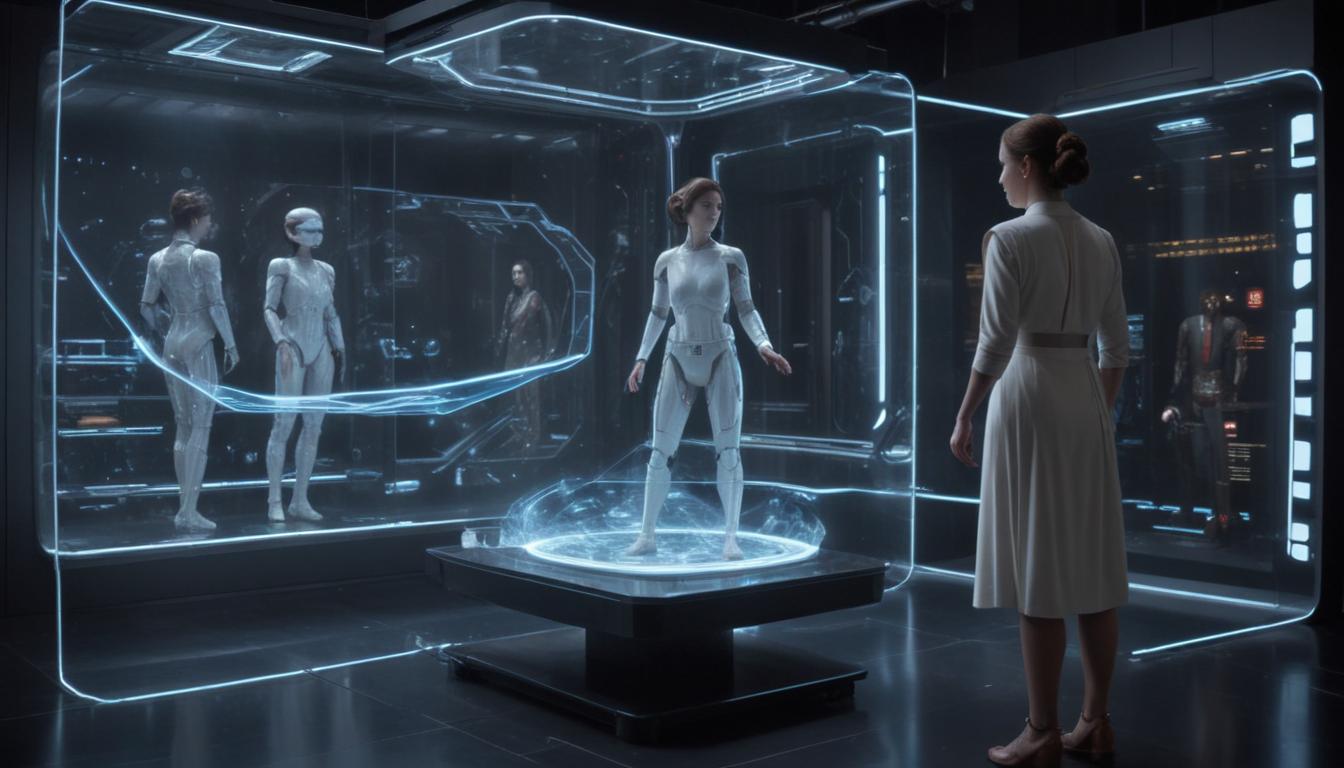Now Reading: How 3D Holograms Float in Mid-Air Explained
- 01
How 3D Holograms Float in Mid-Air Explained
How 3D Holograms Float in Mid-Air Explained

Holographic Technology 3D Images in Mid Air
Have you ever watched a science fiction movie and marveled at the futuristic characters interacting with floating, three-dimensional images? From Princess Leia’s desperate plea in Star Wars to Tony Stark designing his suits in mid-air, these displays have long felt like a distant dream. You might see this technology and wonder when, or if, it will ever become a part of our daily lives. The gap between that cinematic magic and our current flat-screen reality can make the concept feel impossible, like something that will forever be confined to the realm of fiction.
The exciting truth is that holographic technology is no longer just a filmmaker’s fantasy. It is a rapidly advancing field of science with real, tangible applications that are already changing industries. The ability to project and interact with 3D images is here, and understanding it is the first step to appreciating its power. This article will pull back the curtain on the science behind holograms, explore how they are being used today, and give you a glimpse into the breathtaking future of this transformative technology.
How Does Holographic Technology Actually Work
At its core, a hologram is a complex photographic recording of a light field, not just an image. Unlike a standard photograph that captures only the intensity and color of light from one perspective, a hologram records the direction, intensity, and phase of light waves. This is what allows it to reproduce a fully three-dimensional image. To create a hologram, a single laser beam is split in two. One beam, the reference beam, is aimed directly at the recording medium. The other beam, the object beam, is shined onto the object being recorded before it also hits the recording medium.
When these two light beams meet, they create an interference pattern, a microscopic and intricate pattern of light and dark areas that looks like random noise to the naked eye. This pattern is what gets recorded on the holographic film or plate. To view the hologram, another light source, often a laser similar to the original one, is shined through the recorded pattern. As the light passes through, it is diffracted by the pattern, effectively reconstructing the original light waves that came from the object. Your brain interprets these reconstructed light waves as a three-dimensional object floating in space, which you can look at from different angles just as you would a real object.
Beyond Science Fiction Real World Applications of Holograms
While we may not have holographic communication devices in our pockets just yet, the technology is already making a significant impact in specialized fields. It is moving far beyond simple security stickers on credit cards and into applications that are saving lives, enhancing education, and creating entirely new forms of entertainment. These practical uses are proving that holography is not just a novelty but a powerful tool for visualization and interaction.
The potential of this technology is being unlocked in a variety of sectors that rely on complex spatial understanding. From concert halls to operating rooms, holograms are providing a new way to see and engage with digital information. This shift from 2D screens to 3D space is as significant as the move from radio to television, opening up possibilities that were once unthinkable.

Revolutionizing Medicine and Education
In the medical field, holographic technology is creating a paradigm shift. Surgeons can now use holographic displays to overlay a 3D model of a patient’s organs, derived from CT or MRI scans, directly onto their body during surgery. This gives them an unprecedented, X-ray-like view, allowing for more precise incisions and a better understanding of complex internal structures. For medical students, holograms offer a way to study human anatomy in stunning detail without the need for cadavers, exploring the intricate networks of the circulatory or nervous systems as if they were holding them in their hands.
Education is another area experiencing a holographic transformation. Imagine a history class where students can walk around a 3D holographic model of the Roman Colosseum or an astronomy class where the solar system floats in the center of the room. This technology makes abstract concepts tangible and learning deeply immersive. Students can manipulate molecular structures in chemistry or examine engine components in an engineering class, leading to a much deeper and more intuitive understanding of the subject matter.
Transforming Entertainment and Communication
The entertainment industry has been one of the most visible adopters of holographic-style technology. We have seen virtual performers and posthumous concerts where artists appear to be on stage, creating unforgettable experiences for audiences. While many of these large-scale events still rely on clever optical illusions like Pepper’s Ghost, they are paving the way for true holographic entertainment that will allow for more dynamic and interactive live shows. This technology could one day bring fictional characters to life in theme parks or allow for live sports to be viewed in 3D on a tabletop.
The ultimate goal for many developers is holographic telepresence. Instead of a flat video call on a screen, you could have a life-sized, 3D holographic representation of the person you are speaking with in your room. This would revolutionize remote work, long-distance relationships, and international collaboration. The subtle, non-verbal cues we lose on video calls, like body language and true eye contact, would be restored, creating a sense of genuine presence and connection regardless of physical distance.
The Future of Seeing What Is Next for Holographic Displays
Despite the incredible progress, creating the seamless, interactive holograms of science fiction presents significant challenges. Generating and processing the vast amount of data required for a high-fidelity, real-time holographic video is computationally intensive. Furthermore, developing displays that can project these images into a large space without the need for special glasses or contained environments remains a major engineering hurdle. The cost and complexity of the required hardware, particularly the high-powered lasers and precise optics, are also barriers to widespread consumer adoption.
However, researchers are relentlessly working to overcome these obstacles. The future of holography likely involves a fusion with other technologies like artificial intelligence and augmented reality. We can anticipate dynamic holographic displays that can respond to our gestures and voice commands, effectively replacing our physical monitors and keyboards. The goal is to create displays that are smaller, more energy-efficient, and affordable. As these advancements continue, the line between the digital and physical worlds will blur, and the holographic future we have only seen in movies will finally become our everyday reality.



































